iHeartDogs is reader-supported. When you buy via links on our site, we may earn an affiliate commission at no extra cost to you.
As the holiday season rolls in, our homes transform with the sparkle of tinsel, the aroma of chocolate, and the vibrant colors of holly and poinsettias. It’s a time when our living spaces are filled with festive decorations and delicious treats, a visual and sensory feast that signals the joy of the season.
But, while these holiday staples bring cheer and warmth to us, they can spell trouble for our four-legged family members. Tinsel, chocolate, holly, eggnog, poinsettias – the list of potential hazards is surprisingly long. These common holiday items, often irresistible to our curious pets, can be extremely dangerous.
And when we get caught up in the whirlwind of holiday preparations and celebrations, it’s easy to overlook our pets’ little explorations and mischiefs. Our furry friends, naturally drawn to the hustle and bustle of holiday festivities, might find themselves in harm’s way as they explore and sample the seasonal novelties around them. But this curiosity can land dogs at the vet, with many visits occurring due to something a canine has eaten.
The Holiday Season Sees More Vet Visits
Dr. Lisa Olsen, an emergency veterinarian at Iowa Veterinarian Specialties, says that vets are usually very busy this time of year.
“We see more than a fair share of problems related to food in an emergency clinic during the holidays,” she says. “Sugar-free sweeteners can be an overlooked, yet dangerous hazard for our pets.”
But don’t forget the decorations and all the little trimmings. These shiny, glittery things can fall on the floor and become a hidden hazard. Dr Olson advises, “Think of it as Toddler-proofing.”
In dog-proofing your holidays at home, keep this list of holiday dangers for dogs in mind to ensure the season stays merry and bright for everyone. And don’t forget to remind all family and guests that holiday foods are not appropriate “treats” and holiday decorations are not safe “toys.”
10 Extremely Dangerous Holiday Objects for Dogs
#1 – Tinsel
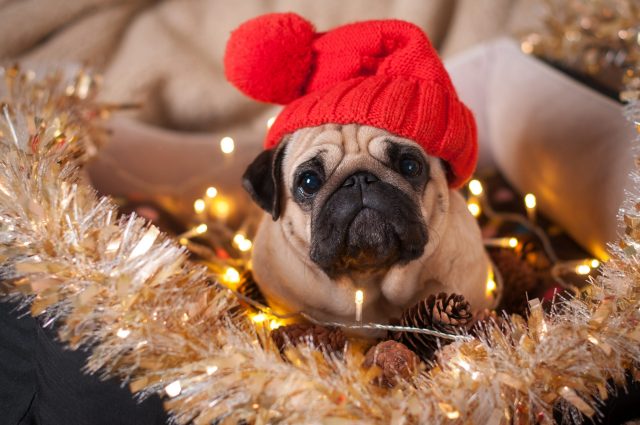
Holiday tinsel, while popular and oh-so shiny, poses significant risks to dogs. The primary issue with tinsel is its dangly, sparkly allure to pets, who might be tempted to chew or swallow it. This can lead to several health hazards:
- Intestinal Obstruction: Tinsel can easily get tangled in a dog’s intestines if ingested. Unlike some other items, it doesn’t break down or pass through the digestive system easily and can cause blockage, a serious condition that might require surgical intervention.
- Choking Hazard: Tinsel, especially if bunched up or in large pieces, can be a choking hazard for dogs. They might accidentally inhale it while playing with or chewing it, leading to potential suffocation.
- Toxicity: Some tinsels may be coated with chemicals or contain lead, which can be toxic if ingested. Lead poisoning in dogs can result in severe health issues, including neurological problems.
- Gastrointestinal Irritation: Even if it doesn’t cause an obstruction, tinsel can irritate the lining of the stomach and intestines, leading to discomfort, vomiting, or diarrhea.
Keep tinsel decorations out of reach. Decorate higher up where dogs cannot access them or skip it altogether. Always supervise your dog when they are in an area with holiday decorations. Immediate intervention can prevent them from swallowing harmful items. To help keep your dog out of rooms or away from areas with breakable or dangerous décor, try a dog gate. The Cumbor 36″ Extra Tall Baby Gate for Dogs is ideal for homes with larger dogs and stairs.
#2 – Ornaments

When it comes to holiday ornaments and our furry friends, those shiny, dangling decorations are not just attractive to us but also to our dogs. And this can be quite a problem. Smaller ornaments are just the right size for a dog to swallow, posing a serious choking risk. Glass ornaments, and some plastic options, might look stunning on the tree, but if they fall and break, those sharp pieces can be a nightmare. A dog could easily cut their mouth and paws or, worse, swallow them, leading to internal injuries. Other ornaments, especially vintage options, are made with materials that aren’t exactly dog-friendly, like lead-based paints. If your furry friend ingests these, it could lead to serious health issues like heavy metal poisoning.
To head trouble off, choose pet-friendly ornaments made from sturdy, non-toxic materials like wood or felt. Decorating the lower part of the tree with less enticing items can also help, as can training your dog to steer clear of the tree and ornaments altogether. You could even put up a decorative fence around your Christmas tree – it’s both practical and adds to the festive look!
If you want to opt for a fence instead of gating off a whole area, this Remote-Controlled LED Christmas Tree Fence offers a cute solution to keep your dog from bumping the tree, stealing ornaments, or drinking water from the base. If your pup is a little more rambunctious, the PETMAKER 4-Panel Indoor Foldable Dog Fence may the be the better choice to protect your tree.
Keep your barrier extra minimal with an indoor electronic fence from Petsafe. The Petsafe Pawz Away Indoor Barrier will allow you to set an off-limits area up to 12 ft. wide and as small as two feet wide to keep your pet out. The collar delivers warning beeps when your pet crosses the boundary before issuing a safe static correction – not an electric shock.
#3 – Tree Needles
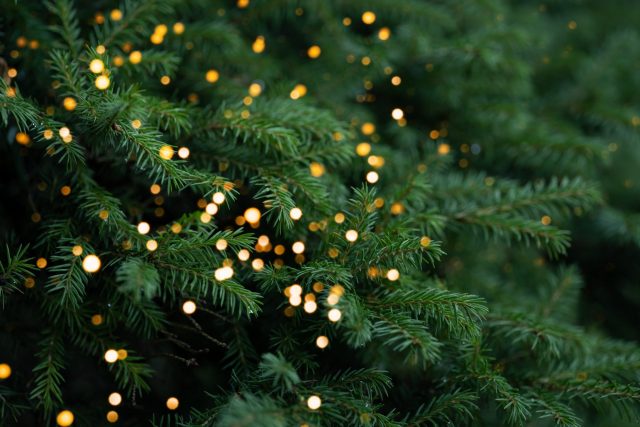
Christmas tree needles, whether from real or artificial trees, pose several hazards to dogs, making them a concern during the holiday season. The needles from real trees like pines, firs, or spruces can be quite sharp. If a dog chews on or ingests these needles, they can cause oral irritation or gastrointestinal upset. The needles can potentially puncture or scrape the lining of the dog’s mouth, throat, or intestines, leading to symptoms like vomiting, diarrhea, or abdominal pain. Additionally, some real Christmas trees are treated with chemicals or preservatives to prolong their freshness, which can be toxic to dogs if ingested.
Artificial tree needles, on the other hand, may not be toxic, but they can still pose a choking hazard or cause intestinal blockages if swallowed, especially for smaller dogs. The plastic or metal components can be hard for a dog’s digestive system to handle, leading to similar gastrointestinal issues.
For more about Christmas tree safety with dogs, check out these 10 Christmas Tree Safety Tips For Dogs: Protect Your Pup From Holiday Hazards.
Even with gates or fences in place, needles have a way of scattering themselves throughout the house. Regular sweeping and vacuuming are a must with a Christmas tree in the home. Plus, if you live with dogs, there’s always loose hair floating about that needs wrangling, so tackle all the floor mess with one of our favorite vacuums for pet hair.
#4 – String and Ribbon
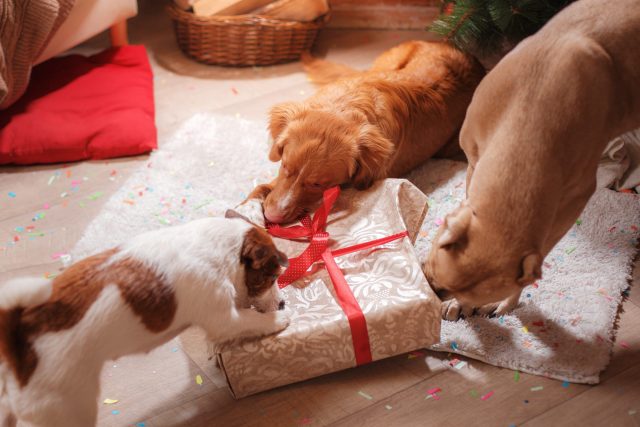
Like all the other dangers on this list, the string and ribbon used to decorate and wrap gifts can become a big problem for dogs. If a dog gets a hold of ribbon or string and starts playing with it, there’s a big chance they might swallow it. And that’s where the trouble begins. These materials can cause all sorts of issues once inside a dog’s body. The most serious one is something called a linear foreign body obstruction. Basically, the string or ribbon can get tangled up in the intestines, and it’s as unpleasant as it sounds. It can lead to severe pain, vomiting, and even life-threatening complications that might require surgery to fix.
And it’s not just about swallowing, either. Dogs can get tangled up in these strings and ribbons, leading to tripping injuries that can land them at the vet. Plus, some ribbons are coated with chemicals or dyes that could be toxic to dogs if they chew on them. If your dog is one who loves the sparkly and dangly package accouterments, perhaps it’s a better idea to skip the bows, string, and ribbon. Wrapping paper can be quite pretty on its own!
#5 – Mistletoe
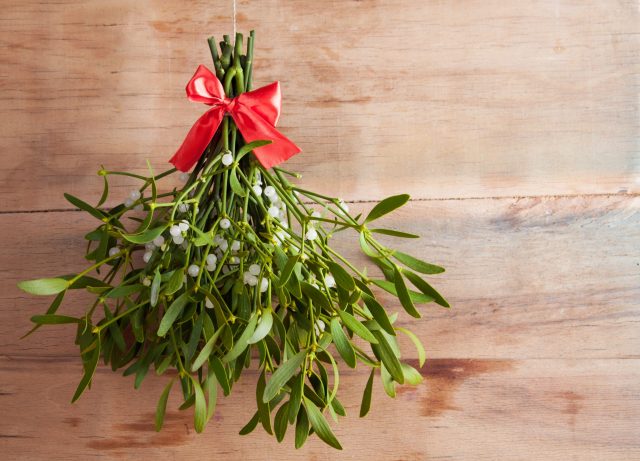
Mistletoe, a common holiday decoration, can be toxic to dogs due to several substances it contains. The primary toxic compounds in mistletoe are lectins and phoratoxins. These substances can cause a range of adverse effects if ingested by dogs.
Lectins and phoratoxins disrupt cellular function and can lead to symptoms such as gastrointestinal upset. A dog that eats mistletoe may experience vomiting, diarrhea, and abdominal pain. In more severe cases, these toxins can cause a sudden drop in blood pressure and heart rate, breathing problems, and even hallucinations.
The severity of the symptoms largely depends on the amount of mistletoe ingested and the specific type of mistletoe. There are different species of mistletoe, and their toxicity levels can vary. The European variety of mistletoe is generally considered more toxic than the American variety. If you suspect your dog has ingested mistletoe, it’s important to seek veterinary attention immediately. As a preventative measure for your pup’s safety, keep mistletoe out of reach of pets or opt for pet-safe fake mistletoe.
RELATED: 14 Common Plants That Are Toxic To Dogs
#6 – Poinsettias
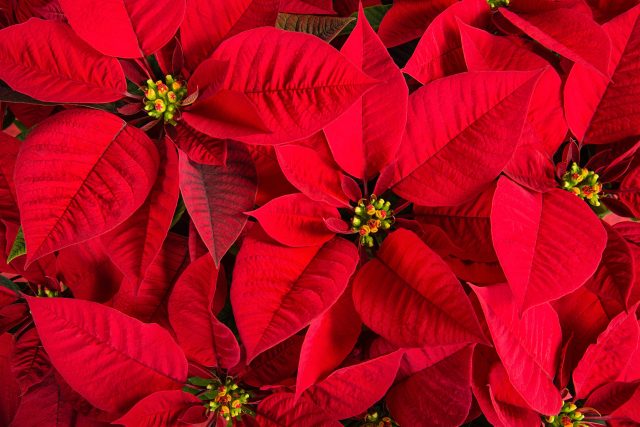
These popular red-leafed plants are a staple of the holiday season but can cause issues for our furry friends. While only mildly toxic, the sap inside the plant is not dog-friendly. This milky sap contains compounds called diterpenoid euphorbol esters and saponins that can irritate the mouth and stomach, leading to symptoms like drooling, vomiting, or sometimes diarrhea. Thankfully, it’s rare for a dog to eat enough of the plant to cause serious harm, as the bitter taste usually deters them after a nibble or two.
Despite this, it’s still a good idea to keep poinsettias out of reach of curious dogs, especially since they might be tempted to chew on the bright leaves. And if you notice your dog has taken a liking to nibbling on plants in general, it might be wise to opt for pet-friendly houseplants instead.
Be prepared for toxicity emergencies with Dr. Cuddles’ ReadyRESCUE.
#7 – Lilies

Lilies may be one of the loveliest flowers, but they are also one of the most toxic to dogs and cats. The danger lies in almost every part of the plant – the petals, leaves, pollen, and even the water in a vase of cut lilies can pose a risk if ingested by our furry friends.
For cats, lilies are particularly dangerous. Even small amounts of any part of the plant or pollen can cause severe kidney damage, leading to kidney failure if not treated promptly. Cats are often more at risk because they may brush against the flower, getting pollen on their fur, and then ingest it while grooming. Symptoms of lily poisoning in cats can include vomiting, lethargy, and a lack of appetite, and these can progress to kidney failure within 24 to 72 hours.
Dogs, while not as sensitive as cats, can still suffer from lily poisoning. Ingesting lilies can cause gastrointestinal upset, with symptoms like vomiting, diarrhea, and abdominal pain. Although the risk to their kidneys is not as severe as in cats, it’s still a situation to avoid.
The key to safety with lilies and pets is prevention. If you have cats or dogs, avoid having lilies in your home or garden. If you suspect that your pet has ingested any part of a lily, seek veterinary care immediately. Early intervention is essential, especially for cats, as the prognosis is much better if treatment is started before the kidneys have been severely affected.
RELATED: Protect Your Pup from These Top 10 Most Common Household Poisons
#8 – Holly

When it comes to decking the halls with boughs of holly, remember that all types of holly, be it the classic Christmas holly we all love, or varieties like English, American, or Japanese holly, are a no-go for dogs. The problem lies in the saponins found in the leaves, berries, and seeds, which can upset a dog’s stomach. As suggested with the other florals and greenery on our list, skip the real stuff and opt for the faux to keep the season merry and bright for your furry one.
#9 – Raisins and Nuts
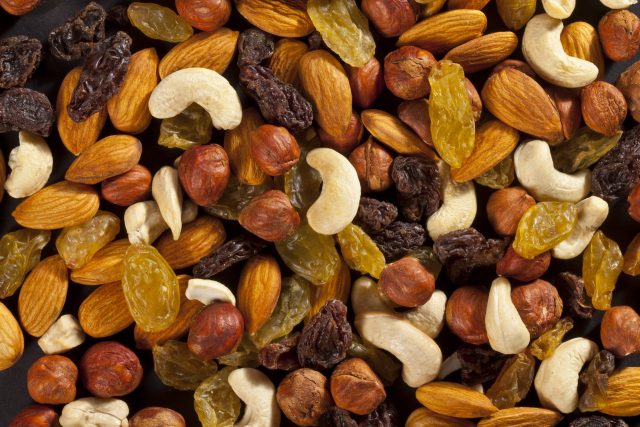
We’ve talked about Christmas flowers and greens. Now, let’s talk about toxic foods, specifically raisins and nuts, which are particularly dangerous for dogs during the festive season. Raisins, often found in holiday treats like fruitcakes or mince pies, are highly toxic to dogs. Even small amounts can cause rapid kidney failure. The exact substance in raisins that causes this toxicity is still a mystery to scientists, but the effects are well-documented. Symptoms of raisin poisoning include vomiting, diarrhea, lethargy, and a decrease in appetite, and these can progress to more serious kidney-related complications if not treated promptly.
RELATED: 11 Must Know Emergency Dog First Aid Procedures
Nuts, on the other hand, carry their own set of risks. While not all nuts are toxic to dogs, several varieties commonly used during Christmas can be harmful. Macadamia nuts, for instance, are notoriously dangerous. They can cause symptoms like weakness, especially in the hind legs, vomiting, tremors, and hyperthermia. Almonds, while not as toxic, can still cause gastrointestinal upset and potential obstructions, given their size and shape. Walnuts and pecans can also be problematic, especially if they’re moldy, as they might contain toxins that can cause neurological symptoms.
The key takeaway here is to keep such festive foods well out of reach of your furry friends. But, life is life, and accidents can happen. Be prepared for toxicity emergencies with Dr. Cuddles’ ReadyRESCUE. Keep this emergency detoxifier on hand if you have a dog who likes to dig through the trash, counter-surf, or sneak treats they shouldn’t. ReadyRESCUE is a veterinary-grade detoxifier that can buy you precious time on your way to the vet if your dog eats toxic items including chocolate, grapes, onions, and more.
#10 – Chocolate

During the holidays, chocolate is everywhere—in candies, baking, and those delightful advent calendars—but it’s one treat that should never be shared with dogs. The culprit in chocolate is theobromine, a compound similar to caffeine, which is perfectly fine for us humans but not so much for dogs.
Dogs metabolize theobromine much slower than we do, leading to a buildup of toxic levels in their system. Even a small amount of chocolate, especially dark or baking chocolate which contains higher levels of theobromine, can be dangerous. Symptoms of chocolate poisoning in dogs can range from mild to severe and include vomiting, diarrhea, rapid breathing, increased heart rate, and even seizures in extreme cases.
White chocolate, while lower in theobromine, still isn’t a safe bet due to its high fat and sugar content, which can lead to other issues like pancreatitis. And let’s not forget about holiday chocolate treats that might contain raisins or nuts, compounding the risk.
The key here is prevention and vigilance, especially during festive gatherings when chocolate treats are often within easy reach on tables and counters. Educating family members and guests about the risks of feeding chocolate to dogs is also vital. And if your dog does happen to sneak a chocolate treat, contact your vet immediately. They can advise on the best course of action based on the amount and type of chocolate ingested.
Since our holiday treats aren’t treats that should be shared with dogs, be sure your pup has their own dog-friendly holiday snacks for indulging. A bag of Portland Pet Food Company Grain-Free & Gluten-Free Gingerbread Dog Biscuits will make them drool with delight! And if they love to chew, fulfill their doggy dreams with Dreambone Holiday Variety Pack 6 Rawhide-Free Chews for Dogs.
Keep the Holiday Merry, Bright, and Safe
While the season is busy and rushes by, don’t forget to prioritize your dog’s wellbeing. Stick to routines as much as possible and keep an eye out for any hidden holiday dangers if you and your dog plan to visit the homes of friends and family. Also, reference the ASPCA poison control site to view an extensive list of dog toxins. And please remember—Think two or three times before giving a pet as a “gift” this season. We believe pets are family that are a privilege to love, not presents to be forgotten.
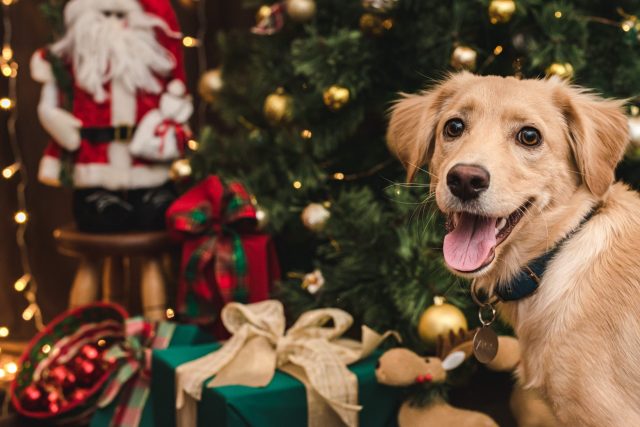


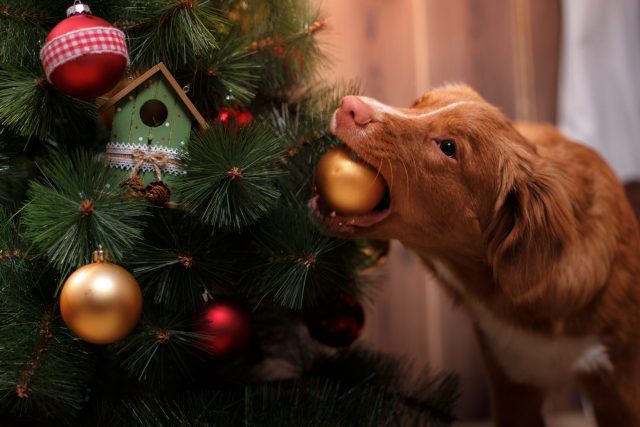
 Toledo, United States.
Toledo, United States.